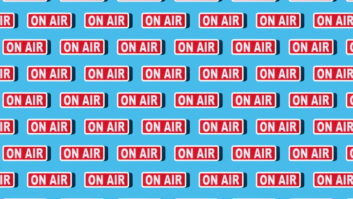Andy Laird Argues that Changing AM Bandwidth From 10 to 5 kHz For IBOC Won’t Impair Audio
Will narrowing a station’s bandwidth for AM IBOC adversely affect the audio quality?
The AM IBOC system FCC-approved for U.S. operation requires using the broadcast station to reduce analog audio bandwidth from 10 kHz to 5 kHz. Broadcasters are hearing from some – mostly broadcast engineers – who think this is the death of a wonderful-sounding, linear medium that under certain conditions has very high fidelity.
There was a time when I would have agreed. I have fought on the purist side of this battle from the start of my radio broadcast engineering career in 1967, always focused on what could make a better-sounding transmitting plant, and then complaining that the receiver manufacturers didn’t build a product that could receive it.
System approach
About 12 years ago, I adjusted my view by acknowledging that the receivers out there are part of the system. To serve our industry best, we must design and adjust with the whole system in mind, as it exists.
How do we define what is AM sound today? If it’s not hi-fi, what can we call it? Are we degrading AM sound by narrowing the transmitted audio bandwidth to 5 kHz? In the future, what should we focus on for best results?
In the past, several schools of thought and industry actions worked to degrade the quality of “hi-fi” AM sound:
– The record producer school of thought: “OK, everyone, out to the cars to adjust our test master.”
– Station equalization. The Program director says: “Plug that EQ into the program line and I will tweak it.”
– Positive modulation. Chief engineer: “Let’s see, if I off-set modulator bias – look, more positives!”
– Multiband processors. PD/CE: “If I can just push up the high-end density more …”
– Multiband processors II. PD/CE: “Louder!”
Politicians and station owners who wanted the bandwidth to accommodate more stations pressured the FCC, and the result was reduced interference protection. Consultants, in turn, enabled more stations, by saying things like, “With 12 towers we can drop this in.”
The following are examples of how “hi-fi” sound did or does not exist, plus forces working at cross purposes to hi-fi.
These two transmitters noted with specific measured information sounded awful from a hi-fi viewpoint. Transmitters with 18 percent intermodulation distortion @ 3 percent harmonic, such as the RCA Ampliphase (50 kW, first gen) are mostly gone from this country.
Transmitters with -18 dB incidental quadrature modulation, such as the Gates MW1 (wide bandwidth noise with heavy distortion in envelop detectors) are another example of units that sounded poor from a hi-fi viewpoint. Some of these transmitters are still in use.
For NRSC curves, band-pass limits and AM stereo, a CE would say, “Now the receiver manufacturers will build wideband radios.” These are examples of my own misguided beliefs that the receiver community would give wider-bandwidth radios one more try.
So we have the activities of others trying to compensate the system with mastering, EQ and processing. We have raising noise levels due to pressure to add more stations along with other electrical noise. We have bad-sounding transmitters.
And we have the personal hopes of people (like the NRSC and myself) that we know what people want, receiver manufacturers will make the stuff and “the people” will buy it. Wrong!
As time has passed, new transmitters, audio processing and production focused away from AM’s “issues” have greatly improved AM’s transmitted audio quality. Protection is improving with rules changes and will improve when the extended-band stations shut down their old channels. But other electrical noise is increasing. What is really being delivered to listeners?
Much of what consumers hear is governed by their radios. A receiver manufacturer will only mass-produce radios that the public will buy. Manufacturers have focused on reducing impulse noise, electrical static blasts, adjacent station “spits” and other noise.
An inexpensive way to reduce noise and interference is to narrow up the audio response. As noise levels have increased over the last 50 years, AM receiver frequency response has narrowed.
AM receiver probe
So how “bad” is it? For the NRSC DAB Subcommittee’s evaluation process of the AM IBOC system, a sub-group of the Test Procedures Working Group was formed early into the test-procedure writing process, around late 1999. To understand the impact of adding AM and FM IBOC, the committees needed to establish a performance baseline for existing receivers.
The sub-group was tasked to find representative radios for the testing process and to characterize their performance. The Consumer Electronics Association gathered general historical sales data to help. (See end of article for information about how to find the report.)
The sub-group chose four radios as representative of the huge number of AM radios in use. Among the findings: The vast majority of the AM radios in use today are very narrow-band. Few have any significant audio output at 4 kHz and no practical output at 8 kHz.
There is almost no wide-band listening to AM. Although the GE Super Radios and C. Crane radios being marketed have wide-band switches that provide response beyond 5 kHz, CEA considers the quantity in use to be insignificant. Up until recently, the C. Crane radios were very narrow-band. The company supplied me with a sample during the test procedures process.
So the term “high-fidelity audio” cannot be used to describe the total AM system. In hanging around the receiver manufacturer representatives participating in the DAB Subcommittee, I hear them use terms like “receiving experience” and “listening experience.” Good terms, the sum of all the parts.
The DAB Subcommittee’s receiver characterization study indicates that narrowing the analog transmission bandwidth should not be audible to the existing system. In the fall of 2000, as a participant in the IBOC evaluation process and to help satisfy my curiosity, I took on a purely subjective, reality-check task. I volunteered to try narrowed audio bandwidth transmission on some of my stations.
Reducing audio bandwidth did not degrade the “listening experience.” Only the operations manager and I at the first station knew about the experiment. We received one negative comment from a listener who noticed. No one else, including any station or company personnel, noticed the bandwidth change.
However, we received some audio quality compliments from the staff through this period.
“The station is sounding great. Are you working on audio processing?”
“Yes, little tweaks here, a cleanup there.”
I ran this experiment in two other markets, with no negative observations from listeners or staff.
I’m not saying that the reduced bandwidth is not audible, just that it manifests itself in ways you may not expect and that, when done carefully, it does not negatively affect the existing system.
Narrower bandwidth required
For the future, IBOC stations will need to reduce audio bandwidth. We as broadcasters should think about how the narrower bandwidth would manifest itself audibly. Here are some suggestions:
Work will be needed to design a low-pass filter system that controls audible “ringing.” Filter ring sounds are affected by the curve shape and by how much energy is being cut out. Also, where the filter(s) are placed in the audio chain will affect the subjective results. Should filtering be done in multiple stages or a single stage? Should it be placed before and/or after multiband processing? This is work most easily done by the audio processor manufacturers.
The broadcast system already “suffers” from the wide variety of filter designs in receivers and from the audio processing techniques practiced in stations. Some of the harsh sounds we hear from AM radios can result from the amount of audio energy we as broadcasters try to shove through them.
When we transmit strong amounts of audio energy outside of a receiver’s band-pass, the receiver’s band-pass filter rings. The ringing is heard back into the fundamental audio. Reducing the out-of-band-pass energy seems to smooth the sound. You may hear this as a reduction of highs; rather, it’s a reduction of ringing components. The ringing artifacts are not harmonically complimentary; they’re discordant and harsh.
Narrow-band audio through audio processors that are not designed to work specifically in the narrow-band world will sound dull, soft. They will not always modulate the transmitter fully.
Digital bit-rate reduction schemes are “unmasked” when audio is processed heavily and then transmitted through a bandwidth-limited system. Reduce the number of times an audio file is encoded and decoded and/or transcoded by using linear digital systems whenever possible. Once these artifacts exist, nothing later in the audio chain can mask them.
I believe that the chances of analog AM radio ever being hi-fi are long gone. There is perhaps 50 years of momentum away from hi-fi that would need to be overcome.
The rising electrical noise floor continues to reduce the usability of wide-band radios in dense urban areas and weaker signaled suburban areas. They are never useable at distance.
So is the listening experience negatively affected by reducing the transmitter analog bandwidth to accommodate AM-IBOC? I believe that the impact is minimal. The listening experience on the vast majority of radios in use may even be improved over today’s wider-bandwidth transmission practices when the challenges outlined are worked through carefully.
To see the NRSC report on audio quality, go to www.NAB.org/scitech. Under Standards Setting Committee, click on NRSC, then on AM IBOC Evaluation Report. Review section 3.4, page 22 of the main report. Also review Appendix D.







